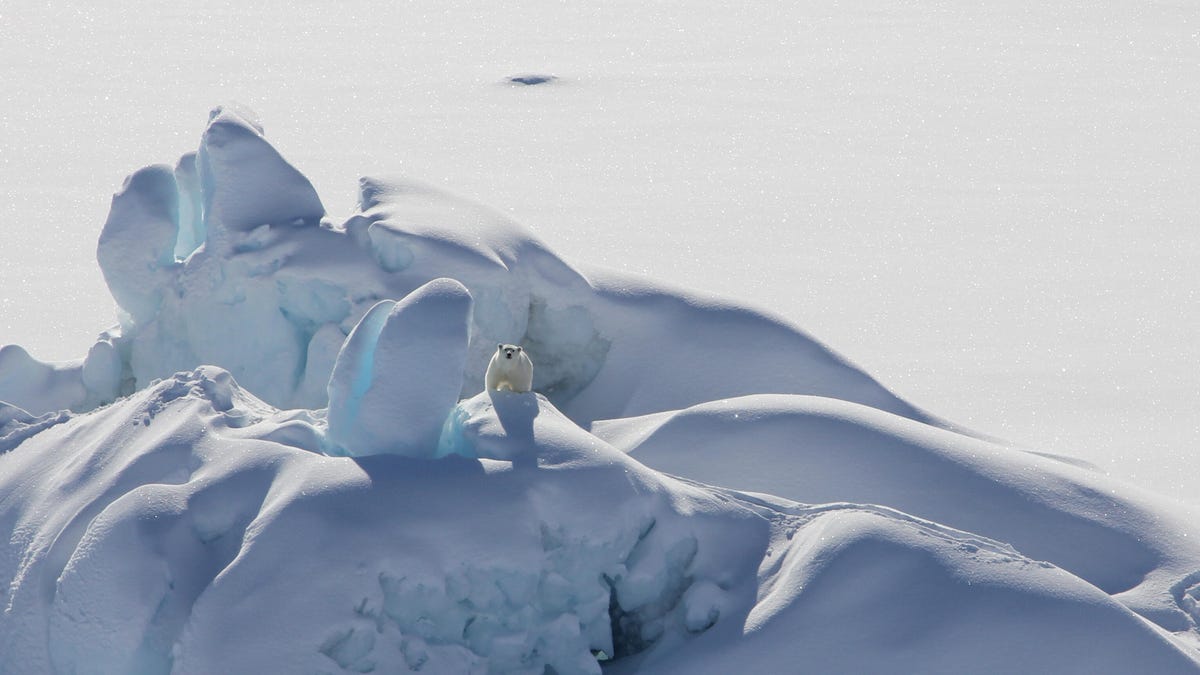Arctic's 'Last Ice Area' may be more vulnerable to climate change than predicted
It's considered a refuge for Arctic wildlife as the planet warms, but it may be in more danger than scientists believed.

The "Last Ice Area" may be more susceptible to climate change than predicted.
It's considered the last stronghold against climate change in the Arctic: a swath of sea ice just north of Greenland and Canada that is predicted to remain frozen even as climate change drives the Earth's temperatures higher. It's an important ecological area, providing a haven for ice-dependent life, such as polar bears, gulls and walruses, and the indigenous people of the Arctic regions.
"Current thinking is that this area may be the last refuge for ice-dependent species," said Axel Schweiger, a polar scientist at the University of Washington. But this region, the "Last Ice Area," might be more vulnerable to climate change than previously believed.
Schweiger leads a new study, published in the journal Communications Earth & Environment on Thursday, which examined an eastern subregion of the LIA known as the Wandel Sea, to understand how it coped during the summer of 2020. Last year, the overall Arctic sea ice concentration was the second-lowest on record, while the sea itself experienced its own record low in August. But why?
Using satellite data and computer modeling, Schweiger and his team try to answer that question.
The Wandel Sea used to be covered in thick sea ice all year round. Some of the ice would remain in the Arctic for years and, over time, it piles up against the coast of Canada and Greenland. Previous modeling, looking into how climate change might affect the area, has shown this ice seems to stick around the longest.
But in August 2020, the concentration of sea ice in the area was at 50%. And that's kind of unusual because during the Arctic springtime, satellite measurements showed the ice started slightly thicker than it had been in the previous decade. That didn't prevent the melt from occurring. Schweiger says this is because there was still "enough thinner, newer ice that melted to expose open ocean." Once sunlight could accumulate in the sea, it contributed to a rapid melt that lead to the record low concentration.
The region of the Last Ice Area examined in the study.
That means that even when older, thicker ice finds its way to the Wandel Sea, it doesn't protect against loss of sea ice as much as one might expect, Schweiger notes. And the ramifications are potentially devastating as accelerating climate change continues to thin out the ice, impacting Arctic wildlife and communities that rely on the sea ice. Some climate models predict very little ice will remain in the Arctic overall by 2040 -- but with the Last Ice Area potentially a refuge against the shrinkage.
The research team asks "Is the LIA in trouble?" and suggests that previous models may need to be reexamined ro account for the ultra-low sea ice levels in 2020. Another outstanding question is whether the Wandel Sea is representative of the sea ice changes occurring across the Last Ice Area.
If the Last Ice Area is one of the few strongholds for life on the ice, learning of its resilience in he face of climate change is paramount in preserving biodiversity in the area. But very little is known about some of the wildlife that inhabits the area, including marine mammals, and how they use the area.
"We have almost no historical or present-day data, and the reality is that there are a lot more questions than answers about the future of these populations," said Kristin Laidre, an Arctic ecologist at the University of Washington.

